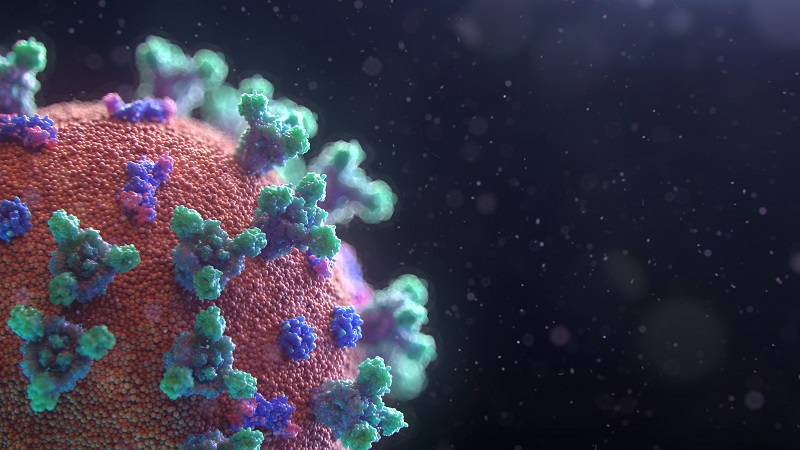Life Sciences - Publication
40 Publications found
Effect of a Novel Ashwagandha-based Herbomineral Formulation on Pro-inflammatory Cytokines Expression in Mouse Splenocyte Cells: A Potential Immunomodulator
Authors: Mahendra Kumar Trivedi , Sambhu Charan Mondal , Mayank Gangwar , Snehasis Jana
In Life Sciences, Medicine and Health Sciences, Public Health
By NCBI Pubmed
Background: Herbomineral formulations are momentous in an audience of worldwide by virtue of their holistic approach to life. These formulations are widely used as complementary therapies in immunocompromised patients including cancer. Still, there is the need of cost-effective and safe herbomineral-based formulation that can modulate immune response by the regulation of cytokines cascades. Objective: Current study, we investigated immunomodulatory effect of TEBEH in LPS-induced cytokines expression levels in mouse splenocytes in vitro. Materials and methods: The most effective and safe concentrations of TEBEH were chosen by determining the cell viability of splenocytes using MTT assay. The pro-inflammatory cytokines such as TNF-α, IL-1β, MIP-1α, and IFN-γ were measured in cell supernatants using ELISA. Results: MTT data showed TEBEH formulation was found safe up to 10.53 μg/mL. At noncytotoxic concentrations (0.00001053-10.53 μg/mL), TEBEH significantly (P ≤ 0.001) inhibited the expressions of TNF-α, IL-1β, and MIP-1α in mouse splenocytes as compared with vehicle control. Conclusion: In summary, TEBEH may indeed promote an anti-inflammatory environment by suppression of pro-inflammatory cytokines. These observations indicated that TEBEH has potential effects in downregulating the immune system and might be developed as a useful anti-inflammatory product for various inflammatory disorders. Summary: The present study was undertaken to evaluate an immunomodulatory effect of the herbomineral formulation in LPS-induced mouse splenocytes with the measurement of cytokines expression such as TNF-α, IL-1β, MIP-1α and IFN-γ. The results showed that the expression of TNF-α, IL-1β, and MIP-1α was significantly down-regulated while, IFN-γ was significantly up-regulated in mouse splenocytes. It is hypothesized that modulation of the proinflammatory cytokines might occur via NF-κB pathway. Therefore, the herbomineral test formulation might act as an effective anti-inflammatory and immunomodulatory product, and this can be used as a complementary and alternative treatment for the prevention of various types of inflammatory and auto-immune disorders Abbreviations used: LPS: Lipopolysaccharide, IL: Interleukin; NF-κB: Nuclear factor kappa-B, TNF-α: Tumor necrosis factor alpha, MIP-1α: Macrophage inflammatory protein-1α, IFN-γ: Interferon, MTT: 3-(4,5-diamethyl-2-thiazolyl)-2, 5-diphenyl-2Htetrazolium), ELISA: Enzyme linked immune sorbent assay, ANOVA: Analysis of variance.

Emerging COVID-19 variants and their impact on SARS-CoV-2 diagnosis, therapeutics and vaccines
Authors: Queenie Fernandes , Varghese Philipose Inchakalody , Maysaloun Merhi , Sarra Mestiri , Nassiba Taib , Dina Moustafa Abo El-Ella , Takwa Bedhiafi , Afsheen Raza , Lobna Al-Zaidan , Mona O Mohsen , Mariam Ali Yousuf Al-Nesf , Ali Ait Hssain , Hadi Mohamad Yassine , Martin F Bachmann , Shahab Uddin , Said Dermime
In Life Sciences, Medicine and Health Sciences, Medicine, Internal Medicine
By NCBI Pubmed
The emergence of novel and evolving variants of SARS-CoV-2 has fostered the need for change in the form of newer and more adaptive diagnostic methods for the detection of SARS-CoV-2 infections. On the other hand, developing rapid and sensitive diagnostic technologies is now more challenging due to emerging variants and varying symptoms exhibited among the infected individuals. In addition to this, vaccines remain the major mainstay of prevention and protection against infection. Novel vaccines and drugs are constantly being developed to unleash an immune response for the robust targeting of SARS-CoV-2 and its associated variants. In this review, we provide an updated perspective on the current challenges posed by the emergence of novel SARS-CoV-2 mutants/variants and the evolution of diagnostic techniques to enable their detection. In addition, we also discuss the development, formulation, working mechanisms, advantages, and drawbacks of some of the most used vaccines/therapeutic drugs and their subsequent immunological impact.

A case of parotitis caused by hMPX virus
Authors: Marieke de Regt , Rogier Ooijevaar , Marcel Jonges , Matthijs R A Welkers , Alex Wagemakers
By NCBI Pubmed
A 26-year-old man reporting a 6-day history of fever, malaise, and a swollen cheek, was referred to our emergency room. The day before his attendance, he had been seen by his general practitioner and started on oral amoxicillin and clavulanic acid. However, his cheek continued to swell, and he developed a temperature of 39·4oC, prompting the referral.

Functional T cells are capable of supernumerary cell division and longevity
Authors: Andrew G. Soerens , Marco Künzli , Clare F. Quarnstrom , Milcah C. Scott , Lee Swanson , JJ. Locquiao , Hazem E. Ghoneim , Dietmar Zehn , Benjamin Youngblood , Vaiva Vezys , David Masopust
In Life Sciences, Nature
By NCBI Pubmed
Differentiated somatic mammalian cells putatively exhibit species-specific division limits that impede cancer but may constrain lifespans1,2,3. To provide immunity, transiently stimulated CD8+ T cells undergo unusually rapid bursts of numerous cell divisions, and then form quiescent long-lived memory cells that remain poised to reproliferate following subsequent immunological challenges. Here we addressed whether T cells are intrinsically constrained by chronological or cell-division limits. We activated mouse T cells in vivo using acute heterologous prime–boost–boost vaccinations4, transferred expanded cells to new mice, and then repeated this process iteratively. Over 10 years (greatly exceeding the mouse lifespan)5 and 51 successive immunizations, T cells remained competent to respond to vaccination. Cells required sufficient rest between stimulation events. Despite demonstrating the potential to expand the starting population at least 1040-fold, cells did not show loss of proliferation control and results were not due to contamination with young cells. Persistent stimulation by chronic infections or cancer can cause T cell proliferative senescence, functional exhaustion and death6. We found that although iterative acute stimulations also induced sustained expression and epigenetic remodelling of common exhaustion markers (including PD1, which is also known as PDCD1, and TOX) in the cells, they could still proliferate, execute antimicrobial functions and form quiescent memory cells. These observations provide a model to better understand memory cell differentiation, exhaustion, cancer and ageing, and show that functionally competent T cells can retain the potential for extraordinary population expansion and longevity well beyond their organismal lifespan.

Human early-onset dementia caused by DAP12 deficiency reveals a unique signature of dysregulated microglia
Authors: Yingyue Zhou , Mari Tada , Zhangying Cai , Prabhakar S. Andhey , Amanda Swain , Kelly R. Miller , Susan Gilfillan , Maxim N. Artyomov , Masaki Takao , Akiyoshi Kakita , Marco Colonna
In Life Sciences, Nature
By NCBI Pubmed
The TREM2–DAP12 receptor complex sustains microglia functions. Heterozygous hypofunctional TREM2 variants impair microglia, accelerating late-onset Alzheimer’s disease. Homozygous inactivating variants of TREM2 or TYROBP-encoding DAP12 cause Nasu–Hakola disease (NHD), an early-onset dementia characterized by cerebral atrophy, myelin loss and gliosis. Mechanisms underpinning NHD are unknown. Here, single-nucleus RNA-sequencing analysis of brain specimens from DAP12-deficient NHD individuals revealed a unique microglia signature indicating heightened RUNX1, STAT3 and transforming growth factor-β signaling pathways that mediate repair responses to injuries. This profile correlated with a wound healing signature in astrocytes and impaired myelination in oligodendrocytes, while pericyte profiles indicated vascular abnormalities. Conversely, single-nuclei signatures in mice lacking DAP12 signaling reflected very mild microglial defects that did not recapitulate NHD. We envision that DAP12 signaling in microglia attenuates wound healing pathways that, if left unchecked, interfere with microglial physiological functions, causing pathology in human. The identification of a dysregulated NHD microglia signature sparks potential therapeutic strategies aimed at resetting microglia signaling pathways.

How to Live And Maintain a Healthy Lifestyle For Zodiac People?
Authors: gulshan
In Life Sciences, Public Health

Creative BioMart Updated Its R-PEAPC Conjugated Proteins for Research Use
Authors: Rachel Jordan
In Life Sciences, Biology, Biotechnology

Lifeasible Provides Plant Gene Overexpression Service for Research Use
Authors: Ed Jones
In Life Sciences, Biology, Biotechnology
By Ed Jones
